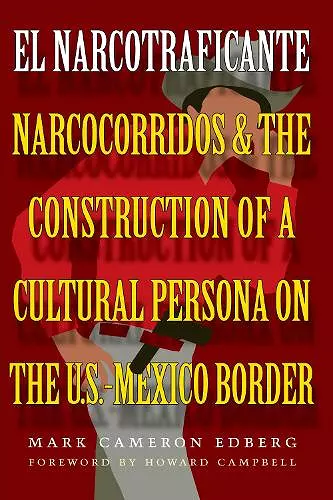El Narcotraficante
Narcocorridos and the Construction of a Cultural Persona on the U.S.–Mexico Border
Format:Paperback
Publisher:University of Texas Press
Published:1st Feb '03
Currently unavailable, and unfortunately no date known when it will be back

"This is a brilliant study on a subject that since the 1970s has riveted national and international attention: the exploits of those men and women who traffic in drugs... The work is very original and offers new theoretical paradigms for both understanding the corrido as an artistic cultural form and understanding a people through this expressive artistic form.Maria" -- Herrera-Sobek Acting Associate Vice Chancellor for Academic Policy, University of California, Santa Barbara
This multilayered ethnography takes a wide-ranging look at the persona of the narcotrafficker and how it has been shaped by Mexican border culture, socioeconomic and power disparities, and the transnational music industry.
Since the late 1970s, a new folk hero has risen to prominence in the U.S.-Mexico border region and beyond—the narcotrafficker. Celebrated in the narcocorrido, a current form of the traditional border song known as the corrido, narcotraffickers are often portrayed as larger-than-life "social bandits" who rise from poor or marginalized backgrounds to positions of power and wealth by operating outside the law and by living a life of excess, challenging authority (whether U.S. or Mexican), and flouting all risks, including death. This image, rooted in Mexican history, has been transformed and commodified by the music industry and by the drug trafficking industry itself into a potent and highly marketable product that has a broad appeal, particularly among those experiencing poverty and power disparities. At the same time, the transformation from folk hero to marketable product raises serious questions about characterizations of narcocorridos as "narratives of resistance."
This multilayered ethnography takes a wide-ranging look at the persona of the narcotrafficker and how it has been shaped by Mexican border culture, socioeconomic and power disparities, and the transnational music industry. Mark Edberg begins by analyzing how the narcocorrido emerged from and relates to the traditional corrido and its folk hero. Then, drawing upon interviews and participant-observation with corrido listening audiences in the border zone, as well as musicians and industry producers of narcocorridos, he elucidates how the persona of the narcotrafficker has been created, commodified, and enacted, and why this character resonates so strongly with people who are excluded from traditional power structures. Finally, he takes a look at the concept of the cultural persona itself and its role as both cultural representation and model for practice.
In sum, Edberg's is a valuable contribution to an emerging, promising, and rich interdisciplinary field. * Journal of Latin American Anthropology *
ISBN: 9780292702066
Dimensions: 229mm x 152mm x 18mm
Weight: 313g
212 pages